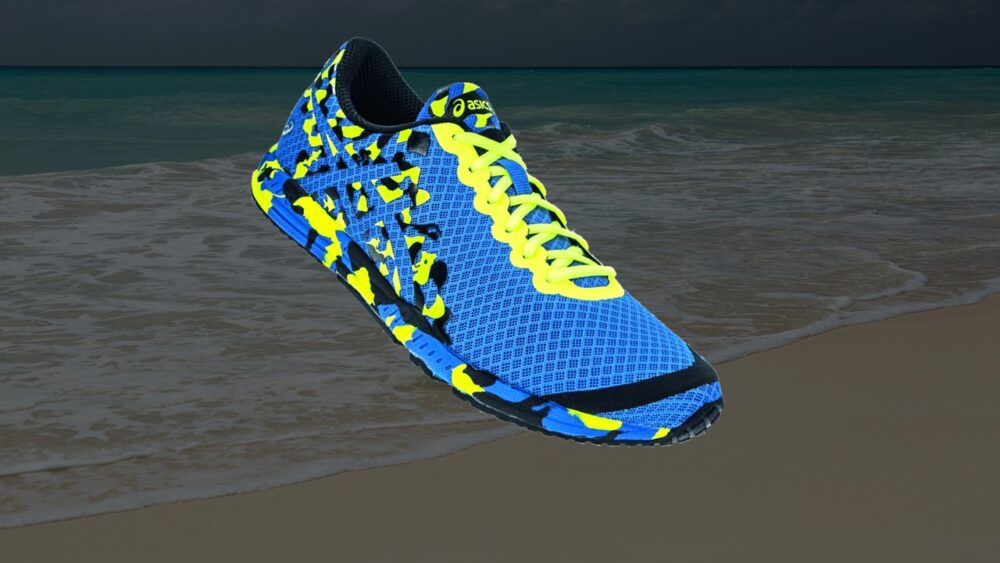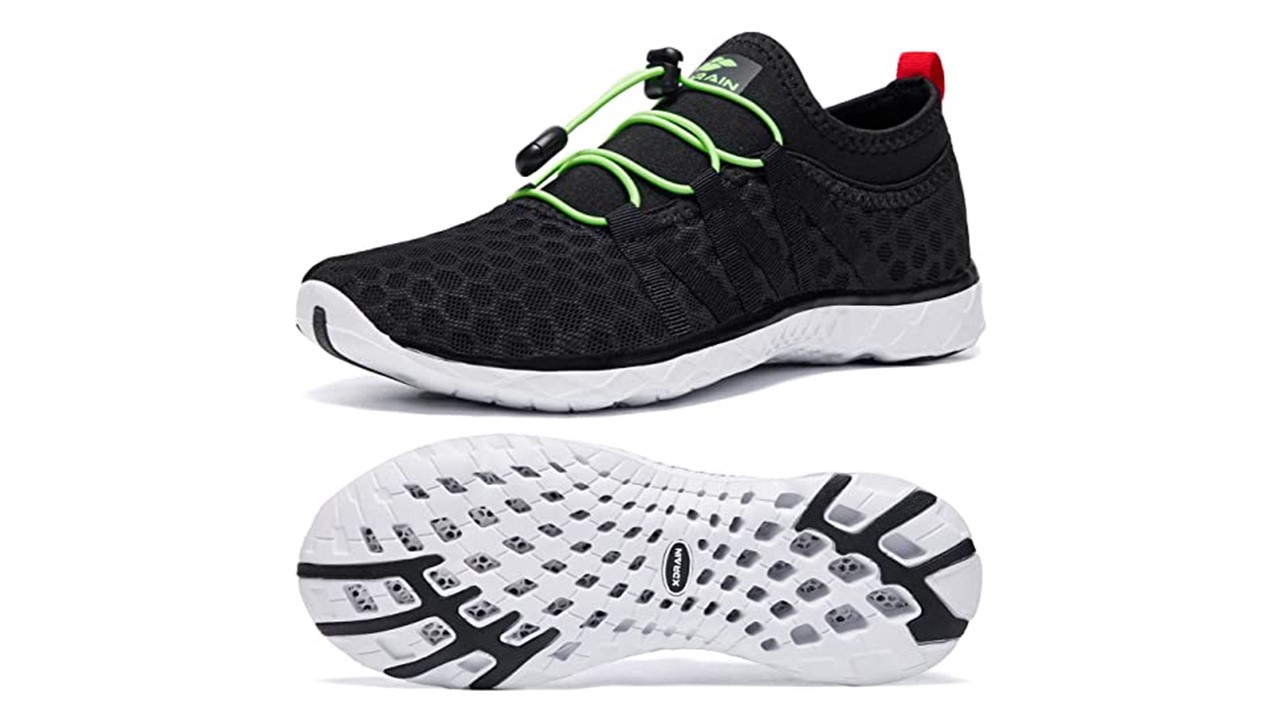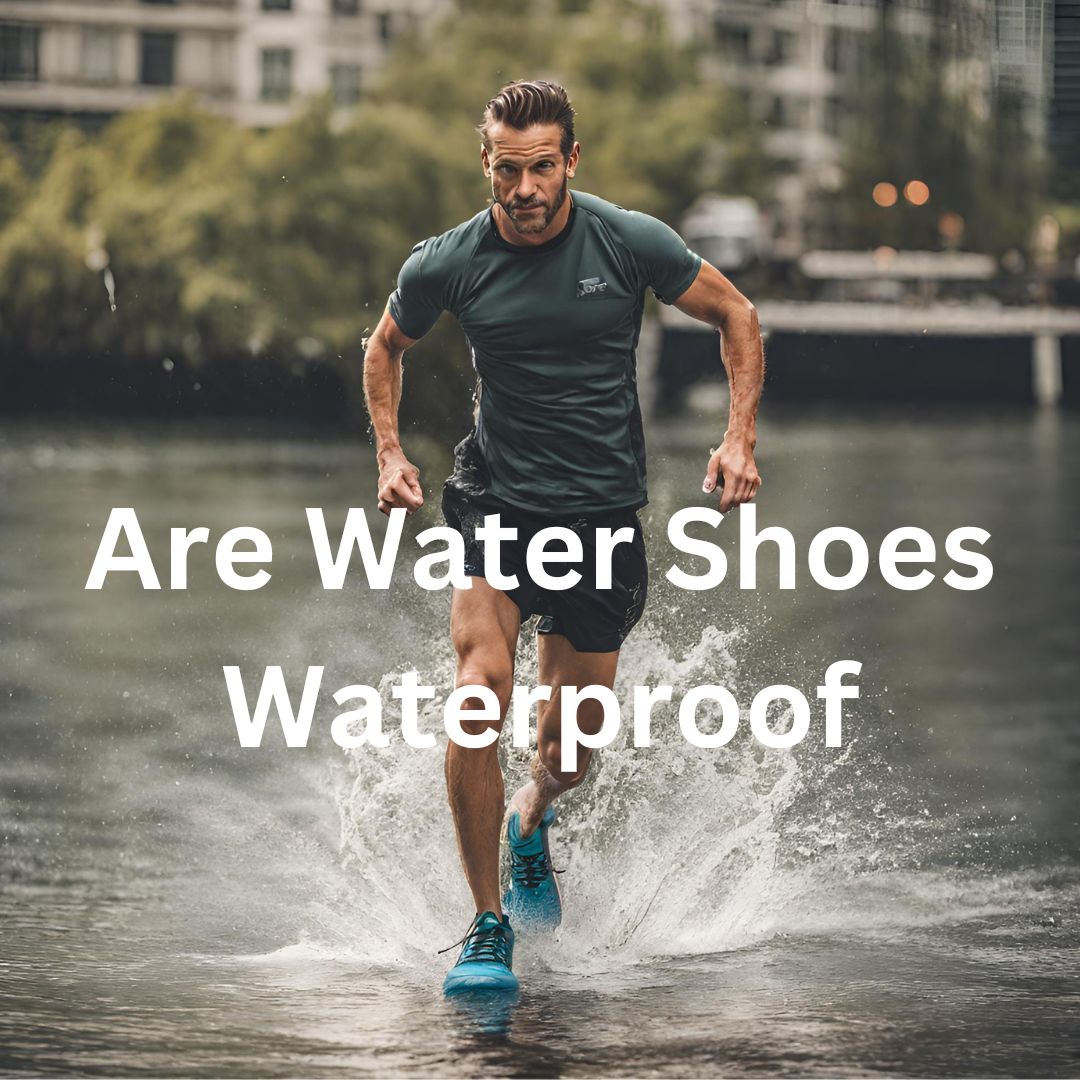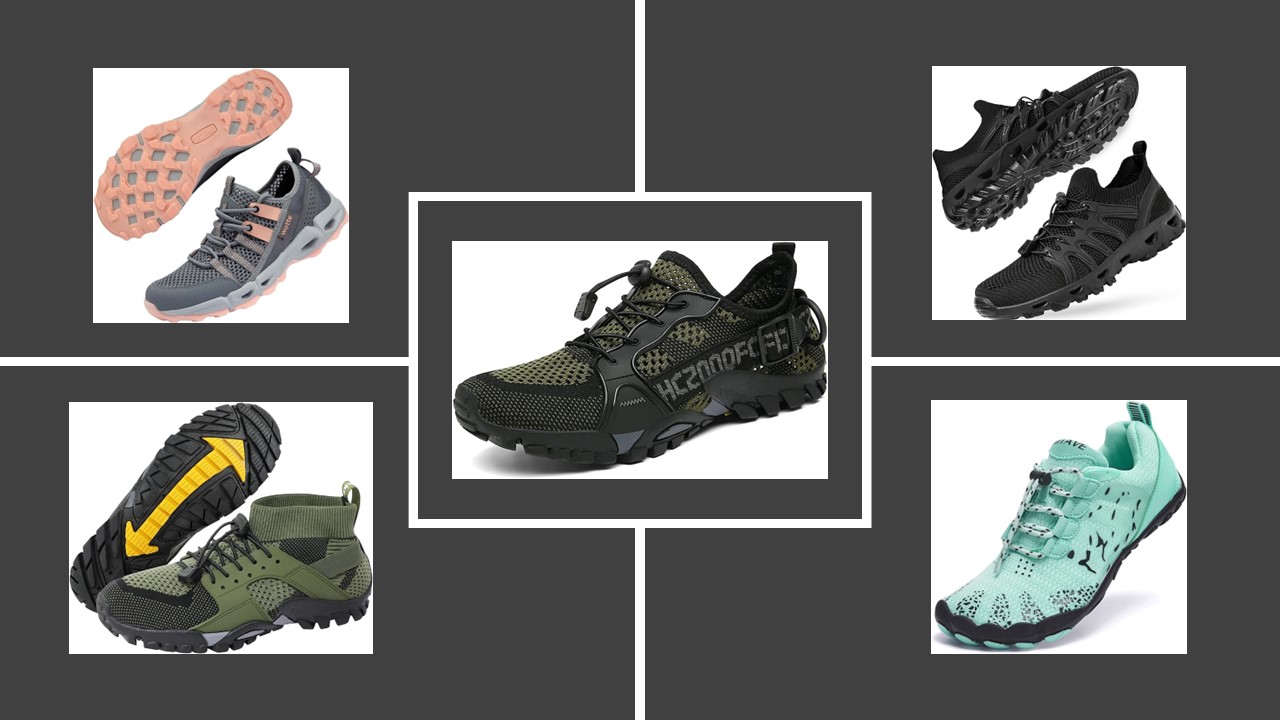Are Water Shoes Non Slip – Dive into the Secret to Surefooted Bliss
Are water shoes non slip? In short, yes, they can be. Water shoes are designed to provide exceptional traction on wet and slippery surfaces, making them an essential companion for various aquatic adventures. But there’s more to the story than a simple yes.
Water shoes are specially crafted with materials and sole designs that enhance their grip on slick surfaces. They typically feature rubber outsoles with intricate tread patterns that channel water away, ensuring a secure foothold. Moreover, these shoes are designed to maintain their non-slip properties even when submerged in water.
In this article, we’ll explore the science behind non-slip water shoes, detailing the materials and features that contribute to their outstanding performance. We’ll also provide recommendations for some of the best non-slip water shoes available in the market. Let’s dive in!
Are Water Shoes Non Slip
Water shoes are indeed designed to be non-slip, and their primary purpose is to provide a secure and stable footing on wet and slippery surfaces.
Whether you’re planning to explore rocky coastlines, participate in water sports, or simply wade through streams, the non-slip qualities of water shoes are essential for safety and performance.
Here’s why water shoes are non-slip:
1. Sole Materials: Water shoes typically feature rubber or synthetic materials in their outsoles. These materials offer excellent traction on both wet and dry surfaces. Rubber, in particular, is known for its grip, and it can maintain its non-slip properties even when wet.
2. Tread Patterns: The soles of water shoes often have intricate tread patterns designed to channel water away from the sole, creating a firm grip on the ground. These patterns vary in design, but their purpose is the same: to reduce the risk of slipping by providing stability.
3. Quick-Drying and Drainage: Many water shoes are equipped with drainage systems, which allow water to escape from the shoe, preventing the build-up of excess moisture that can decrease traction. This quick-drying feature is crucial for maintaining a non-slip surface.
4. Secure Fit: Water shoes are designed to provide a snug and secure fit. This prevents your feet from sliding inside the shoe, which can lead to instability on slippery surfaces.
5. Versatility: Water shoes are not limited to aquatic activities; they can also be used in various outdoor environments. Their non-slip qualities extend to uneven terrain, making them suitable for hiking, walking on rocky beaches, and other adventures.
Water shoes are deliberately engineered to be non-slip, making them an excellent choice for anyone who needs reliable and secure footwear in water-related activities or when traversing wet, slippery terrain.
When selecting water shoes, consider the sole materials, tread patterns, and any additional features like quick-drying capabilities to ensure you get the best non-slip performance for your specific needs. Top of Form

The Best Non Slip Water Shoes (Are Water Shoes Non Slip)
In the world of outdoor adventures and water-related escapades, there’s a golden rule that every seasoned enthusiast knows by heart: secure footing is the key to success.
Whether you’re a beachcomber exploring rocky shorelines, an avid kayaker navigating swift currents, or someone who simply loves to bask in the cool embrace of clear waters, the importance of reliable footwear cannot be overstated.
It’s the difference between a carefree day by the water and an unexpected slip-up that can turn the tides. Enter the unsung heroes of aquatic explorations with these best non-slip water shoes.
Product Image | Product Name | Key Features | Rating | Price |
| ||||
| ||||
| ||||
| ||||
| ||||
| ||||
| ||||
| ||||
| ||||
|
The Benefits Of Wearing Non-Slip Water Shoes (Are Water Shoes Non Slip)
Wearing non-slip water shoes offers a range of benefits, making them an essential piece of footwear for various water-related activities. Here are the key advantages of donning non-slip water shoes:
1. Enhanced Traction
The most obvious benefit is improved traction on wet and slippery surfaces. Non-slip water shoes are designed with specialized outsoles and tread patterns that provide a secure grip on wet rocks, sandy shores, and boat decks, reducing the risk of slips and falls.
2. Safety
Safety is paramount when engaging in water activities. Non-slip water shoes help prevent accidents and injuries by keeping you stable in challenging aquatic environments. Whether you’re kayaking, snorkeling, or walking along a riverbank, these shoes offer protection and confidence.
3. Comfort
Many non-slip water shoes are designed for comfort. They often feature cushioned insoles and a secure fit, ensuring your feet stay comfortable during extended use. This is particularly important for water sports or long walks on the beach.
4. Protection
Water shoes provide protection for your feet. They shield your soles from sharp rocks, shells, or underwater hazards, preventing cuts and bruises. They also act as a barrier against hot sand or abrasive surfaces.
5. Quick Drying
Non-slip water shoes are typically made from materials that dry quickly. This prevents the shoes from becoming waterlogged, which can make them heavy and uncomfortable. Quick-drying properties ensure your feet stay comfortable and help prevent issues like blisters.
4. Versatility
These shoes are versatile and can be used in various outdoor settings. They’re not limited to water activities and can serve as great hiking or outdoor adventure footwear, providing the same non-slip benefits on various terrains.
5. Hygiene
Water shoes help keep your feet clean and protected in environments where you might encounter mud, dirt, or other contaminants. This is especially important for water sports, as they can help prevent contact with potentially harmful substances in the water.
6. Durability
Non-slip water shoes are built to withstand the harsh conditions of water environments, so they tend to be durable and long-lasting. Investing in a quality pair can save you money in the long run, as they won’t wear out quickly.
7. Improved Performance
For water sports enthusiasts, non-slip water shoes can significantly enhance performance. They provide the stability needed for activities like paddleboarding, windsurfing, or even swimming in rough waters.
8. Prevent Bacterial Infections
Water shoes act as a barrier between your feet and the ground, preventing direct contact with potentially contaminated or bacterial-ridden surfaces in lakes, rivers, or communal water facilities.
Whether you’re a casual beachgoer, a water sports enthusiast, or an adventure seeker, these shoes provide the assurance and protection you need to enjoy your aquatic adventures to the fullest.
READ ALSO: Are Water Shoes Necessary – Unlock the Secrets And Get the Facts
What Makes Water Shoes Non-Slip (Are Water Shoes Non Slip)
Non-slip qualities are a defining feature of water shoes, and they are the reason these specialized footwear options excel in providing secure footing on wet and slippery surfaces.
To understand what makes water shoes non-slip, it’s essential to delve into the materials used in their soles and the design elements that enhance traction in wet conditions.
Materials
1. Rubber Outsoles
The primary material of choice for water shoe soles is rubber. Rubber offers excellent grip due to its natural stickiness and flexibility. It maintains its traction even when exposed to water, making it a top choice for water shoes.
The pliable nature of rubber allows it to conform to the contours of the ground, providing increased surface contact and, consequently, improved grip.
2. Synthetic Compounds
Some water shoes incorporate synthetic compounds that mimic the traction properties of rubber. These compounds are often designed to be even more durable and resistant to wear and tear.
Tread Pattern and Sole Design
The key to the non-slip performance of water shoes lies in the design of their soles. The following elements contribute to their effectiveness:
1. Lug Patterns
The tread pattern on the sole of water shoes consists of lugs, which are the raised, often triangular or hexagonal shapes that come into contact with the ground. These lugs are strategically placed to create friction and channel water away from the sole.
By displacing water, the lugs ensure that the rubber sole maintains contact with the surface.
2. Siping
Siping refers to the fine, slanted cuts or grooves on the sole of the shoe. These grooves act as channels for water, helping to disperse moisture from beneath the shoe. Siping creates additional edges that enhance grip by increasing the contact points between the sole and the ground.
3 Varied Lug Heights
Many water shoe soles feature a combination of lug heights. Taller lugs provide traction on soft surfaces like sand or mud, while shorter lugs maintain grip on harder, uneven terrain. This variance ensures versatility across different terrains.
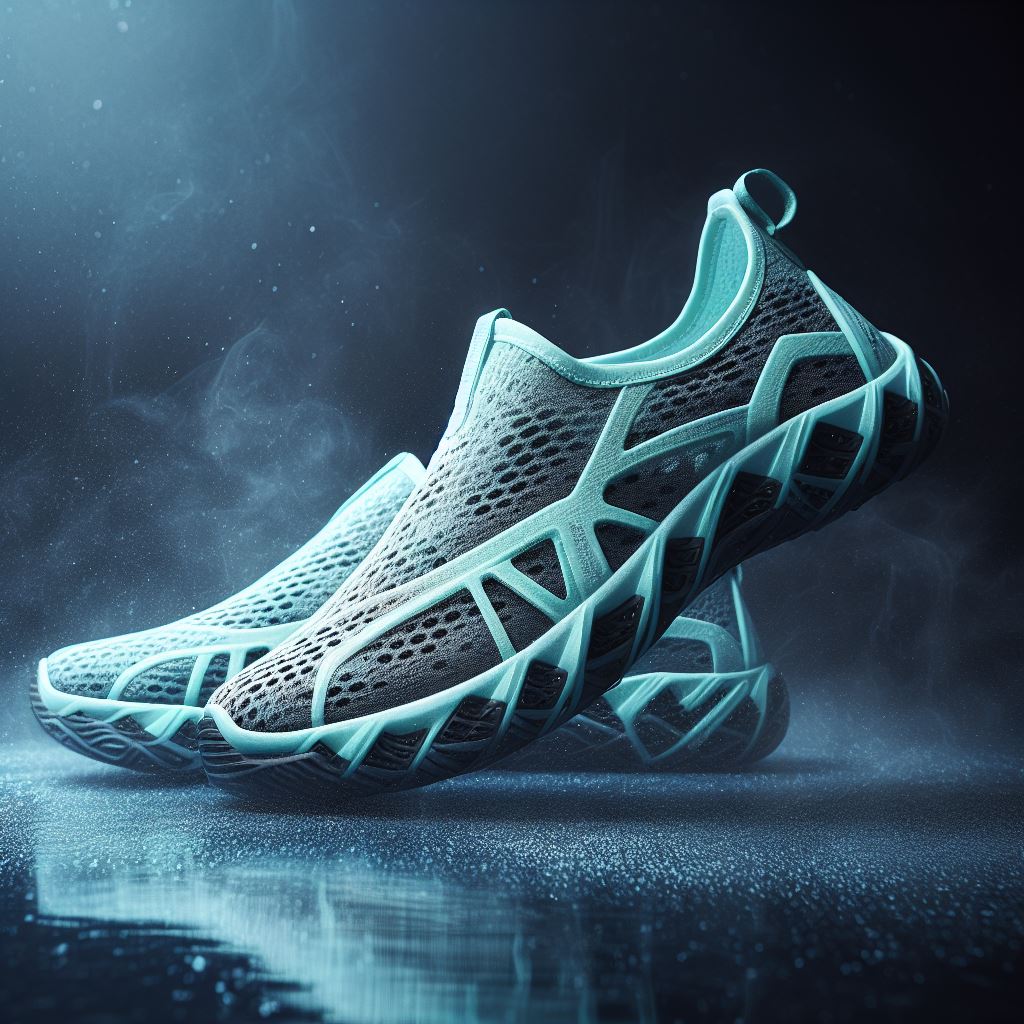
Water Activities Where Non-Slip Water Shoes Are Essential (Are Water Shoes Non Slip)
Non-slip water shoes are invaluable in a variety of water-related activities, where stability and safety are paramount. Let’s explore some use cases for non-slip water shoes and why they are essential for each activity:
1. Beach Walking
Why Non-Slip Shoes are Essential: Beaches are known for their shifting sands and wet shorelines. With changing tides and various terrains like soft sand, pebbles, and seashells, beachgoers need non-slip water shoes to maintain traction and avoid slipping on uneven surfaces.
Safety and Performance: Non-slip water shoes ensure that beach enthusiasts can explore the shoreline confidently. They protect the feet from sharp objects buried in the sand and provide a stable footing when wading in the water. This enhances the overall beach experience and reduces the risk of injury.
2. Rocky Shoreline Exploration
Why Non-Slip Shoes are Essential: Rocky shorelines are treacherous with slippery rocks, algae-covered surfaces, and uneven terrain. Hikers and nature enthusiasts need non-slip water shoes to navigate these challenging landscapes safely.
Safety and Performance: Non-slip water shoes offer superior grip on wet and jagged rocks. They reduce the chances of falling or sustaining injuries while exploring tidal pools, capturing the beauty of the coast, or collecting seashells. Their traction enhances balance and stability.
3. Water Aerobics
Why Non-Slip Shoes are Essential: Water aerobics involves vigorous movements in swimming pools or aquatic environments. To maintain balance and avoid slipping on pool decks, participants require non-slip water shoes.
Safety and Performance: Non-slip water shoes improve grip on wet pool surfaces, preventing accidents during exercises. They also provide support for movements in the water, enhancing performance. Instructors and participants can focus on the workout without worrying about slips.
4. Kayaking and Canoeing
Why Non-Slip Shoes are Essential: Kayaking and canoeing involve launching and landing boats, stepping into watercraft, and maneuvering in potentially wet conditions. Non-slip shoes are essential to maintain stability during these activities.
Safety and Performance: Non-slip water shoes help kayakers and canoeists maintain their footing when entering and exiting the watercraft. They also enhance grip on slippery boat surfaces, allowing for efficient paddling and reducing the risk of capsizing.
5. Snorkeling and Diving
Why Non-Slip Shoes are Essential: Snorkelers and divers often access the water from rocky or slippery shorelines. Non-slip shoes provide a safe entry and exit point and protect the feet from potential hazards.
Safety and Performance: Non-slip water shoes make it safer to walk into the water with fins, snorkel, and other equipment. They also maintain a firm grip on underwater surfaces, aiding divers in maintaining buoyancy and control, especially in areas with strong currents.
In all of these use cases, non-slip water shoes are essential for enhancing safety and performance. They protect against injuries, provide stability on slippery surfaces, and ensure that enthusiasts can fully enjoy their water-related activities without concerns about slipping or stumbling.
Whether you’re a beachcomber, hiker, athlete, or water adventurer, non-slip water shoes are a valuable addition to your gear, helping you explore and enjoy aquatic environments with confidence.
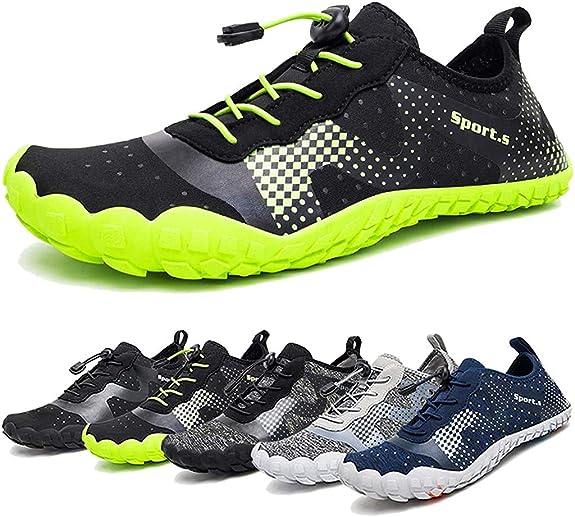
How To Choose The Right Non-Slip Water Shoes For Your Needs (Are Water Shoes Non Slip)
Choosing the right non-slip water shoes for your specific needs involves considering various factors to ensure they meet your expectations and provide optimal performance. Here’s a step-by-step guide to help you select the perfect pair:
- Identify Your Activities: Determine the primary activities for which you need water shoes. Are you planning to use them for kayaking, snorkeling, beachcombing, or more vigorous water sports like rafting or paddleboarding? Understanding your specific use case is crucial.
- Grip and Traction: Assess the type of terrain you’ll encounter. If you’ll be navigating rocky shores or slippery riverbeds, look for water shoes with deep and aggressive tread patterns. For more general use, a moderate tread pattern may suffice.
- Material Matters: Consider the materials used in the construction of the water shoes. Opt for shoes with rubber or synthetic outsoles for superior grip and durability. The upper material should be quick-drying and breathable to enhance comfort.
- Fit and Comfort: Make sure the water shoes provide a snug but not too tight fit. They should allow for freedom of movement while ensuring your feet stay secure. Look for cushioned insoles and padded collars for added comfort.
- Quick-Drying Properties: Water shoes should dry rapidly to prevent waterlogged discomfort. Check for drainage holes and materials that facilitate quick drying, as this is essential for extended use.
- Arch Support: If you have specific arch support needs, seek water shoes with arch support features. This is crucial for those with flat feet or high arches to prevent discomfort during extended use.
- Adjustability: Some water shoes come with lacing systems or straps that allow for adjustments to achieve a customized fit. These are ideal if you have specific fitting requirements.
- Protection: Consider the level of protection the shoes offer. If you’ll be in environments with sharp rocks or shells, opt for shoes with reinforced toe caps or thicker materials to prevent injuries.
- Versatility: If you intend to use your water shoes in various outdoor settings, select a versatile pair that offers non-slip properties on both wet and dry terrains. This way, you can use them for activities beyond water-related adventures.
- Brand and Model Research: Research reputable brands and specific models known for their non-slip qualities. Read customer reviews and testimonials to gain insights into real-world experiences with the shoes.
- Budget: Determine your budget but be prepared to invest in a quality pair that meets your needs. Cheaper options may lack the durability and features required for your intended activities.
- Try It Before You Buy: Whenever possible, try on the water shoes in a physical store to ensure they fit well and meet your comfort requirements.
- Size Selection: Pay close attention to sizing charts and recommendations provided by the manufacturer. Remember that water shoes are meant to fit snugly, so it’s essential to get the right size.
- Return Policy: Check the return policy of the retailer in case the water shoes do not meet your expectations or do not fit correctly.
- Warranty: Consider the manufacturer’s warranty, as it can provide added confidence in the product’s quality and durability.
By considering these factors and tailoring your choice to your specific needs and intended activities, you can confidently select the right non-slip water shoes that will enhance your safety, comfort, and performance during your aquatic adventures.
Tips For Caring For Your Non-Slip Water Shoes (Are Water Shoes Non Slip)
Caring for your non-slip water shoes is essential to ensure they remain effective and comfortable over the long term. Proper maintenance will extend their lifespan and keep them in good condition. Here are some tips for caring for your non-slip water shoes:
- Rinse After Use: After any water activity, rinse your water shoes with fresh, clean water. This helps remove sand, salt, and any contaminants that can deteriorate the materials.
- Hand Wash When Necessary: If your water shoes are heavily soiled, hand wash them with mild soap and water. Use a soft brush or cloth to gently scrub the insoles and outsoles.
- Avoid Machine Washing: Avoid tossing your water shoes in the washing machine, as this can damage the materials and the glue that holds them together.
- Dry Properly: Allow your water shoes to dry naturally. Avoid direct sunlight or intense heat sources, as excessive heat can cause materials to deteriorate. Stuff the shoes with newspaper to absorb moisture and help them maintain their shape.
- Remove Insoles: If your water shoes have removable insoles, take them out to dry separately. This prevents odor buildup and allows both the insoles and shoes to dry more quickly.
- Store Carefully: Store your water shoes in a cool, dry place away from direct sunlight. Avoid leaving them in a hot car or in a damp, enclosed space, as these conditions can lead to mold and deterioration.
- Avoid Chlorine and Harsh Chemicals: Keep your water shoes away from chlorine, as it can damage the materials. Avoid contact with sharp or abrasive surfaces that can cause cuts or tears.
- Regularly Check for Damage: Inspect your water shoes for any signs of damage, such as loose stitching, worn outsoles, or separation of layers. Address these issues promptly to prevent further deterioration.
- Use Odor Control: To prevent odors, consider using odor-controlling products or techniques like baking soda or special insole inserts designed to combat odor.
- Replace Insoles: If your water shoes have non-removable insoles and they become smelly or uncomfortable, consider replacing them with aftermarket insoles for added comfort and hygiene.
- Rotate Shoes: If you frequently use your water shoes, it’s a good idea to have more than one pair and rotate them. This allows each pair to dry thoroughly between uses, extending their lifespan.
- Know the Limitations: While water shoes are durable, they do have a lifespan. If they become excessively worn, it’s time to replace them to ensure your safety and comfort during water activities.
- Follow Manufacturer Recommendations: Pay attention to care instructions provided by the manufacturer in the product manual or on their website. These recommendations are specific to the materials used in your water shoes.
By following these tips, you can ensure that your non-slip water shoes remain in good condition, providing you with reliable performance and comfort for your water-related adventures. Proper care will also extend the lifespan of your water shoes, saving you money in the long run.
The Bottom Line On Are Water Shoes Non Slip
Are water shoes non-slip? Absolutely. These purpose-built footwear options are designed to provide reliable traction on wet and slippery surfaces.
From beach walks to rocky shoreline exploration and water aerobics, the non-slip qualities of water shoes are your trusted companions, enhancing safety and performance in various water-related activities.










